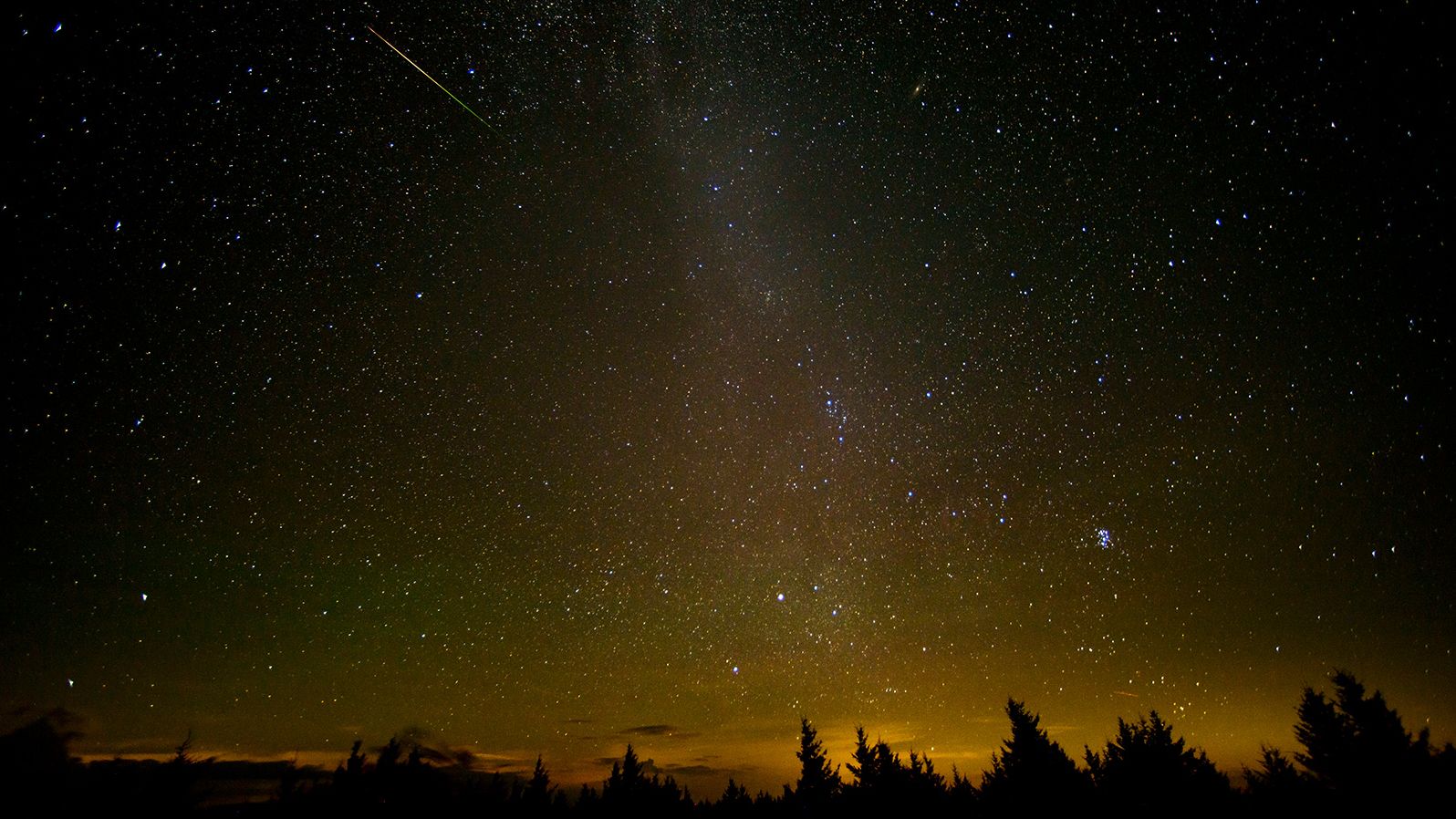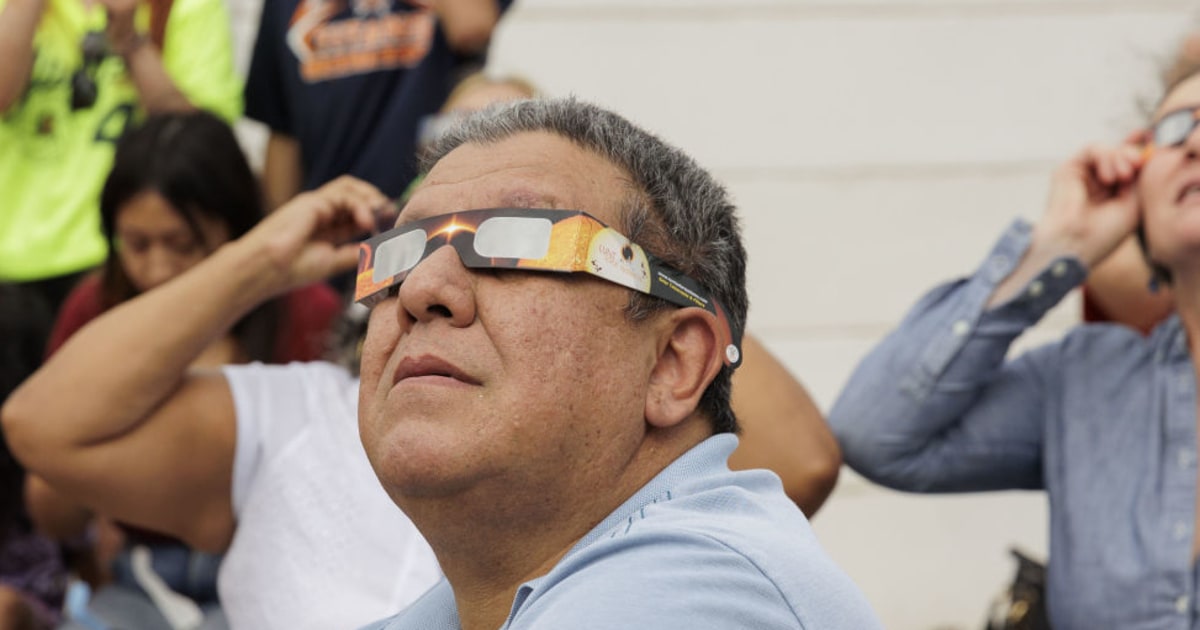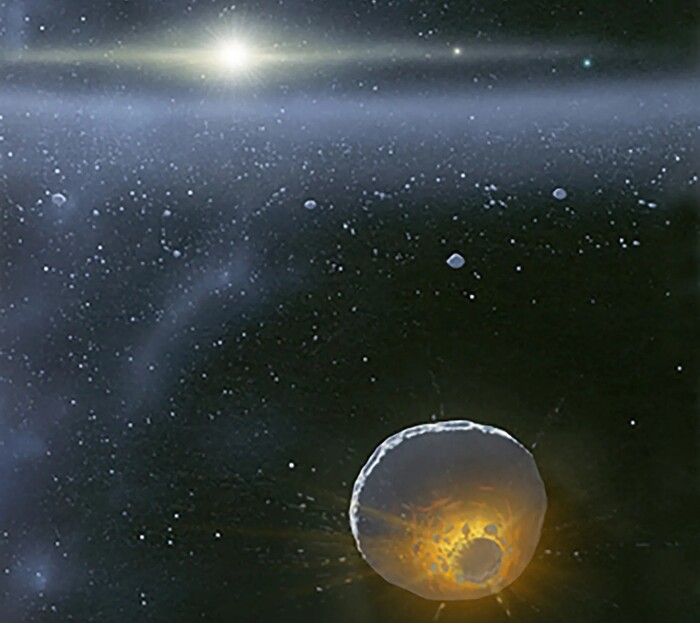A comet, a starry night and more.
What to see in the January sky, according to NASA 1:37
(CNN) --
Meteor showers, full moons and eclipses will light up the sky in 2023. This year will be a skygazer's delight, with plenty of astronomical events on the calendar.
A comet discovered in March 2022 will approach the Sun on January 12, according to NASA.
The comet, detected by astronomers using the Zwicky Transient Facility at Palomar Observatory in San Diego County, California, is named C/2022 E3 (ZTF) and will pass as close to Earth as possible on February 2.
The comet should be visible with binoculars in the morning sky to observers in the Northern Hemisphere during most of January and to observers in the Southern Hemisphere in early February, according to NASA.
It is very likely that we will find the International Space Station flying over the area on any given day.
And if you ever want to know which planets are visible in the morning or evening sky, check out The Old Farmer's Almanac calculator.
Here are the rest of the major celestial events of 2023, so you'll have your binoculars and telescope ready.
advertising
Full moons and supermoons
Most years there are 12 full moons, one for each month.
But in 2023 there will be 13, two of them in August.
The second full moon in a month is known as a blue moon, after the phrase "once in a blue moon," according to NASA.
Normally, full moons occur every 29 days, while most months on our calendar are 30 or 31 days long, so the months and moon phases do not always coincide.
This results in a blue moon approximately every 2.5 years.
The two full moons in August can also be considered supermoons, according to EarthSky.
Definitions of a supermoon can vary, but the term generally denotes a full moon that is brighter and closer to Earth than normal and therefore appears larger in the night sky.
Some astronomers claim that the phenomenon occurs when the Moon is less than 90% from perigee, its closest approach to orbiting Earth.
By this definition, the July full moon will also be considered a supermoon, according to EarthSky.
This is the list of full moons for 2023, according to the Old Farmer's Almanac:
January 6: Wolf Moon
February 5: Snow Moon
March 7: Worm Moon
April 6: Pink Moon
May 5: flower moon
june 3 strawberry moon
July 3: Stag Moon
August 1: Sturgeon Moon
August 30: Blue Moon
September 29: Harvest Moon
october 28 moon of the hunter
November 27: Beaver Moon
December 26 cold moon
Although these are the popularized names associated with the monthly full moon, each has its own meaning in Native American tribes (many of them also go by different names).
The Geminids, the most intense meteor shower of the year: when and how to see them
Lunar and solar eclipses
In 2023 there will be two solar eclipses and two lunar eclipses.
On April 20, there will be a total solar eclipse, visible to the inhabitants of Australia, Southeast Asia and Antarctica.
This type of event occurs when the Moon comes between the Sun and the Earth, blocking the Sun.
And for some skywatchers in Indonesia, parts of Australia and Papua New Guinea, it will actually be a hybrid solar eclipse.
The curvature of Earth's surface can cause some eclipses to switch between total and annular as the Moon's shadow moves across the globe, according to NASA.
As in a total solar eclipse, the Moon comes between the Sun and Earth during an annular eclipse, but this occurs when the Moon is at or near its furthest from Earth, according to NASA.
This makes the moon appear smaller than the sun, so it doesn't completely block our star and creates a bright ring around the moon.
On October 14, an annular solar eclipse will occur throughout the Western Hemisphere, visible in North, Central, and South America.
Don't forget to wear suitable protective glasses to view solar eclipses safely, as sunlight can be harmful to the eyes.
For its part, a lunar eclipse can only occur during a full moon, when the Sun, Earth, and Moon align and the Moon passes into the Earth's shadow.
When this happens, the Earth casts two shadows on the Moon during the eclipse.
The outer partial shade is called penumbra;
the full, dark shadow is the umbra.
"Blood Moon": how is it created?
When the full Moon moves into the Earth's shadow, it darkens, but does not disappear.
Instead, sunlight passing through Earth's atmosphere illuminates the moon dramatically, tinting it red, which is why it is often called a "blood moon."
Depending on the weather conditions in your area, it may have a rusty or brick red color.
This happens because blue light undergoes greater atmospheric scattering, so red light will be the most prominent color when sunlight passes through our atmosphere and shines on the Moon.
A total lunar eclipse appeared in the skies of Canta, east of Lima, on May 15, 2022. Credit: Ernesto Benavides/AFP/Getty Images
On May 5, a penumbral lunar eclipse will occur for the inhabitants of Africa, Asia and Australia.
This less dramatic version of a lunar eclipse occurs when the Moon passes through the penumbra, that is, the faint outer part of Earth's shadow.
The partial lunar eclipse on October 28 will be visible in Europe, Asia, Australia, Africa, part of North America and much of South America.
Partial eclipses occur when the Sun, Earth, and Moon are not completely aligned, leaving only part of the Moon in shadow.
meteor shower
The new year begins with the Quadrantids meteor shower, which is expected to peak on the night of January 3-4 in North America, according to the American Meteor Society.
It is the first of 12 meteor showers that will occur throughout the year, although the next one, the Lyrid shower, will not reach its maximum until April.
These are the maximum dates of other rains that can be observed in 2023:
Lyrids: April 22-23
Eta Aquarids: May 5-6
Southern Delta Aquarids: July 30-31
Alpha Capricornids: July 30-31
Perseids: August 12-13
Orionids: October 20-21
Southern Taurids: November 4-5
Northern Taurids: November 11-12
Leonidas: November 17-18
Geminids: December 13-14
Ursids: December 21-22
If you live in an urban area, it may be a good idea to drive to a place that is not plagued by city lights.
If you find an area unaffected by light pollution, meteors could be visible every two minutes from sunset to sunrise.
Find an open area with a wide view of the sky.
Make sure you have a chair or blanket so you can look up.
And give your eyes 20-30 minutes to adjust to the dark—without looking at your phone!—so the meteors are easier to see.
eclipsemeteor showerfull moon


/cloudfront-eu-central-1.images.arcpublishing.com/prisa/U2APBS3XZ5E3TOXYDCZUDIJLSY.jpg)






